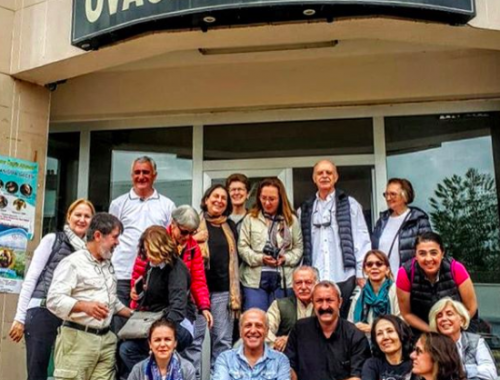Cappadocia; Rocks of Ages
Herodotus was the first to use the term Cappadocia, a word derived from the Persian “Katpatukya” meaning “a land of beautiful horses”. The land lies in central Anatolia within an imaginary quadrangle with corners at Aksaray, Kırşehir, Kayseri and Niğde. Tourists are concentrated in the triangle linking Nevşehir, Avanos and Ürgüp.
The landscape of this region is unearthly and ghost1ike, with wave upon wave of ravines and rocks, dotted with stone pyramids and cones and obelisks. Created by nature, it has been hollowed out by man into fantastic cave formations in the form of churches, store-rooms, kitchens, refectories, pigeon-houses, and even underground cities.
For centuries Cappadocia served as a bridge between East and West, situated as it was at the crossroads of two ancient routes, one running from Ancyra (Ankara) to Soandus (Nevşehir), through the famous Cilician Gate and down to Tarsus; the other from leonium (Konya) to Caeserea (Kayseri). it also stood for centuries on the turbulent frontier between two great faiths, and it bears the marks of the great differences between those two cultures.
Apart from its impressive natural beauty, Cappadocia is famous for its rock churches adorned with remarkable frescoes; for its astonishing underground cities with their amazingly intricate security system s; and for a number of beautiful Seljuk and Ottoman monuments.
It has changed greatly since the time of Father Jerphanion, the famous French Jesuit art historian who was the first to classify many of the rock churches at the beginning of this century. For one thing there are now troglodyte settlements in use with TV aerials on their rock roofs.
But the viticulture, the warm hospitality of the people, their colorful life-with their traditional pottery crafts, carpets and kilims, and the lovely delicate objects carved from onyx -remain the same. You can still go for excursions on horses or donkeys, or you can go trekking through valleys filled with delicious fruits.
Carved by man
The Cappadocian landscape has been transformed in the course of the centuries by volcanic activity in the region. The most imposing volcanoes are Mt. Hasan (Hasandağ, 3,266 m.) and M t. Melendiz (2,953 m.). The “volcanic mantle” of the region, accumulated during the course of millions of years, is approximately 100 meters thick. Volcanic activity at Hasandağ began 13.5 million years ago and continued until about 2000 B.C., with occasional dormant periods in between.
Over the years the volcanic mantle, formed by volcanic tuff, lava, ash and boulders, was subjected to considerable erosion from rainfall, snow, floods, rivers, strong winds and temperature changes. The rivers of Melendiz and Kızılırmak (the Halys of antiquity) and their tributaries, the continental climate with its very great extremes of temperature, earthquakes, rainfall, and the special character of the rock, provided ideal conditions intense erosion. And this created the deep narrow canyons, valleys and ravines, and the distinctive formations peculiar to the region. The erosion, however, halted at the hard basalt and andesite rock, leaving untouched the heavy boulders that form the region’s stone pyramids, unearthly needles, and strange pillars surmounted by rock.
These pyramidal and pillar-like formations are popularly known as “fairy chimneys” by the people of the region. Some of them reach a height of 30-40 meters at some points, and they are an absolutely unique natural phenomenon.
The volcanic mantle, and the heavy erosion that transformed it, were not evenly distributed throughout the region -hence the infinite variety of peculiar rock formations that exist in the area. These formations display a whole range of colors, from the beige of Görerne to the pink of Güllüdere, and from the violet of Ihlara to the red of Kızılçukur. The mix of metals and minerals emitted during the eruptions determines the color. But it also varies with the season of the year and time of day. So expect to get different hues on pictures taken at different times on the same spot on the same day.
The soil is composed of tuff, a soft porous rock that can be easily dug and shaped when moist, but which hardens quickly after carving. This characteristic meant that for the locals a cave became the best and most practical type of home. The inhabitants of the area developed a new kind of settlement by hollowing out the fairy chimneys, as well as the subterranean soil, to form two or three storey houses, underground cities, churches, mosques, dovecotes and cool-air depots. The most outstanding characteristic of these dwellings is that they are always dry protected from the harmful effects of moisture by a steady temperature (12-15 degrees centigrade) which provides a natural system of air-conditioning. This makes it possible to remain comfortably indoors during both hot summers and cold winters.
Rock-cut architecture
The advantages of tuff were exploited by the veıy first settlers of Cappadocia. At first they carved their dwellings in the form of simple caves. But later they developed their carving techniques and understanding of physics to such a level that they could hollow out shelters, sanctuaries or burial chambers, either underground or above the ground.
The carving technique used remain ed the same throughout the ages: it consisted of first wetting the tuff with water, then carving it and waiting for it to dry and harden. The Cappadocians carved to imitate the architecture ‘Of buildings, giving no special attention to the construction problems peculiar to troglodytes. All the columns, apses, domes, vaults and chancel screens that their carvers have given shape to, have no architectural function. They are purely ornamental. The Cappadocian artist imitated the basic architectural elements in the construction of all classical churches. That is why there are free set columns, asymmetrical pillars, and eve n imperfect cupolas.
The Christian places of worship in Cappadocia can be roughly classified into three: the r e f e c t o r y monasteries, the court yard monasteries, and the hermitages. The refectory monasteries have a refectory with a rock-cut table and benches, a church and a few undecorated rooms. The courtyard monasteries have a large hall, a kitchen and a single church, all grouped in an orderly manner around a (usually) three-sided courtyard. The hermitages are the small, single naved churches scattered around Cappadocia. The horse-shoe-shaped blind niches, and the façades of some of the monasteries are the most important features of Cappadocian rock-cut architecture.
Historical background
The history of Cappodocia stretches back to the Middle Paleolithic period. Five separate settlements within the boundaries of Niğde have been dated to the Neolithic period. Real settlement of the region, however, began with the Hittites and Assyrians. Acemhöyük to the northwest of Aksaray was settled in the 3rd millennium B.C. During the Bronze Age. Excavations in Sulucakarahöyük (Hacıbektaş) have uncovered remains from the Hittite, Phrygian, Roman and Byzantine era, while objects dating from the Old and Middle Hittite periods have been found at Topaklı Höyüğü in Avanos.
By the first century B.C. the Aegean city-states were the main influence over the central Anatolian province. Then in the year 17 A.D. Cappadocia formally became part of the Roman Empire; it fell under the hegemony of Byzantium in 395 AD.
During the 8th and 9th centuries AD., waves of Arab invaders passed through the region, but they did not settle there. Later the region was ruled by the Anatolian Seljuks and various local lords, until it came under the sway of the Ottoman empire in 1466.
Cappadocia was an important monastic centre for the Byzantine Empire. Here St. Basil and St. Gregory developed monastic communities based on a creed of love and brotherhood, communal production and sharing, rather than on individual sec1usion. From 726-843 A.D. the iconoclastic controversy raged throughout the Byzantine empire with the iconoclasts demanding the destruction of religious images. In later centuries, when the iconolaters returned to power, the walls of the Cappadocian churches were once again decorated with frescoes. These can sometimes achieve a moving beauty.
What to see?
The major sights of Cappadocia are within the Nevşehir – Ürgüp – Avanos triangle. Of central interest is the Görerne Open Air Museum with its multitude of rockhewn monasteries. There are at least 18 churches and chapels in the museum area, belonging to the mid and Iate 11th century. There are estimated to be at least 365 churches in the Görerne region, providing a different chapel for every day of the year. The churches are named, throughout Cappadocia, after characteristics that have been attributed to them mostly by the local Turkish population.
The normal way of visiting the museum is to proceed along the path in a counter c10ckwise direction. This route is carefully labeled. Beginning with the St. Bash Church, you proceed to the Elmalı (Apple), St. Barbara, and Yılanh (Snake) churches. Then come the Karanlık (Dark) and Çarıkh (Sanda!) churches, and the nunnery. The churches of the Apple and the Karanlık are temporarily closed for restoration. The largest church hollowed into the rock and the richest in frescoes in the whole of Cappadocia- is the Tokalı (meaning Buckle) Church which stand s very close to the entrance of Göreme Open Air Museum.
The Tokalı Church consists of four main chambers: the arched entrance known as the Old Church; the columned three apsidal recess known as the New Church; the Paracc1esion -or side chapel; and the Lower Church. The Old Church is believed to have been built about 910/920 A.D., whereas the New Church was built at the end of the 10th century and repainted later. Both have been recently restored.
Paşabağ, near Zelve -also known as the Monks’ Valley because of its hermitages hollowed out of the weird stone pyramids- is worth a visit. It is filled with scores of very striking fairy chimneys, scattered among vineyards and with double or triple necks, each crowned by basalt rocks.
Zelve, which once housed one of the largest communities in the region, is an amazing “cavetown” honeyecombed with many dwellings, a rock cut mosque, and churches and monasteries spread across three valleys.
Avanos is a recently o p e n e d tourism centre, and is famous for its carpet weaving and pottery shops. The ancient cave dwellings within the town are incorporated into present-day houses. The façades of these stone houses were decorated during the Ottoman period with carving techniques inherited from the Seljuks. Relief’s were carved on the doors, windows, fire-places and cupboards.
Underground cities
The vast underground cities of Cappadocia were developed over the centuries as a refuge from hostile attack. At present, 121 of these settlements have been discovered. Of these, Derinkuyu and Kaymaklı are the most famous. Each of the seven storeys of Kaymaklı contains 15 houses and can accommodate up to 200 people. The city’s labyrinth of corridors, churches, cemeteries, wine factories and air vents makes it impossible for a stranger to find his way. Extra security is afforded by rocks blocking the entrance to all the corridors. The underground city of Özkonak, located to the north of Avanos, which eould shelter 60,000 people, has been described by some western writers as the eighth wonder of the world.
And the rest…
Üçhisar is a troglodyte village situated 9 km from Nevşehir. i is famous for a huge rock formation once used as a fortification.
Ortahisar, which means “middle fortress” in Turkish, is the place to see the best examples of cool-air storage in Cappadocia. There are many churches near Ortahisar -of which the Halaçdere complex is one of the best examples of a courtyard monastery.
A natural vo1canic canyon, the 14 km long Ihlara vaIley, is located 45 km from Aksaray between the villages of Ihlara and Selimiye on the undulating Melendiz creek. The valley contains 105 rock-carved churches and 4,535 dwellings. The walls of the churches on either side of the Melendiz creek are painted with charming frescoes in both the Cappadocian and Byzantine styles. The churches near Ihlara are typically Cappadocian, and are marked by an eastern inf1uence. The churches in the Belisırma area -Direkli Kilise, Kırkdamaltı, Bahattin Samanhğı, Sümbüllü and Karagedik are in the Byzantine style.
During the spread of Christianity in the 4th century Gelveri (Güzelyurt) was an important centre. The terrace formations, the size of the stones, and an architecture distinguished by its use of decorated cut stone, make the town unique.
Ürgüp is the tourist heart of Cappadocia, with its hotels, boarding house s, restaurants and discos. Its souvenir shops have a vast selection of semi-precious stones -such as lapis lazuli, jade, silver and gold, as well as elaborate wood and metal work, carpets and kilims.
An important commercial and administrative centre in the Ottoman period, Ürgüp’s name is derived from “ur-kup”, meaning “a lot of rocks”. It is famous for its stone houses with their fine loggias and beautiful1y carved decoration. The Turkish-style arched houses, most of them with two storey, have a courtyard (hayat) and summer and winter quarters. These consist of living rooms, guest rooms with fireplaces, summer and winter kitchens, stables, storerooms and a number of barns.
The village of Sinassos, to the south of Ürgüp, is known for its original stone architecture and well preserved frescoes. A stone building which contains a fresco depicting the Russo-Japanese war has been transformed into a hotel.
The incomparable Soğanlı Valley is noted for its swallows, donkeys and decorative dolls. The churches of Karabaş and Kubbeli are distinctive.
Nigde is one of the most important cities of Cappadocia and has been inhabited sine e the Middle Paleolithic period. Formerly known as Nahita or Nikita, Niğde was inhabited throughout the Byzantine, Seljuk, Ilhanid, Eretna and Karamanid periods. It is especially rich in Seljuk monuments.
The principal places of interest in the city centre are:
- • the castle, with no precise date of construction but restored by the Seljuks;
- • the Mosque of Alaeddin, built in 1233 by Sultan Keykubat;
- • the Tomb and the Mosque of Sungur Bey, built by a Mongolian chief in 1355, famous for its stone doors on which the figures of a lion griffon and a double-headed eagle are carved; relief are on display.
Nevşehir has a history dating back to the Neolithic Age. it was probably re-established by the Hittites, who named it Nyssa, and later it became the Soandos of the Romans, and the Muşkara of the Seljuks.
The main focus of interest in the city is the Külliye, a complex of buildings founded by Damat İbrahim Pasha, the son-in-Iaw of Sultan Ahmed III. The complex consists of a mosque, a medrese, a bath, a caravanserai (Beylik Han) and a public kitchen (hospice).
Gülşehir is a lovely town, once inhabited by the Hittites and the Romans. Known as Zoropassos during the Persian epoch and Arapsun before the Ottoman conquest, the town flourished under the patronage of Seyit Mehmet Pasha. Better known as Kara Vezir (the Black Vizier), he was born in Gülşehir and became a minister of state in Istanbul. The most outstanding historical monument in the town is the Külliye built by Kara Vezir Pasha in 1799 in the Ottoman baroque style. It consists of a mosque, a medrese and a fountain.
Hacıbektaş is 27 km. north of Gülşehir on road 765. The town is named after a very well-known Anatolian mystic, the founder of the “Bektaşi” sect. A visit to the Hacıbektaş Museum is essential for an understanding of another aspect of Cappadocia. Hacı Bektaş Veli arrived in Anatolia from Khorasan in the first half of the 13th century. After traveling for some time in Anatolia he settled in Sulucakarahöyük, now called Hacıbektaş. Excavations begun there in 1967 have yielded Hittite, Roman and Byzantine finds.
After the Mongol raids and the revolts of Babais, many people began to seek a spiritual leader and to set up new organizations. During this turbulent period Hacı Bektaş Veli began to speak out for social justice, brotherhood, love and peace. He lived with animals like lions, deer, sheep and eagles, and his followers included Jews and Christians. In the 15th century, Balım Sultan, one of his followers, laid down the principles of the Bektaşi order on the basis of Hacı Bektaş Veli’s teaching.
Kayseri, the old capital of Cappadocia (called Mazaca by the Hittites, Eusebeia by the HelIenised Cappadocian kings, and Caeserea by the Romans), is a modern Anatolian city with a history going back to the Early Bronze Age. It then embraces subsequent civilisations from the Hittites to the Ottomans.
Kayseri is particularly famous for the Huan Hatun complex, the medreses, and its stone tombs (kümbet). The ancient KaneshKarum, a settlement of Assyrian merchants dating back to the 2nd millennium B.C., is located some 22 km. N-E of Kayseri.
Caravanserais
One of the greatest achievements of the Anatolian Seljuks was the construction of a network of large caravanserais in Anatolia. Having achieved political stability, and having centralized control of the overland trade, the Seljuks began to open up a network of international trade routes.
Trade between Anatolia and the Near East, Central Asia and Europe was carried by caravans, with the caravanserais providing overnight accommodation, food and security for the travelers, as well as serving as staging-posts for the Seljuk armies.
These cast1e-like buildings reflect the commercial wealth, the organizational strength, and the high cultural level of the Seljuks. The great caravanserais were built on the plans of the fort-like structures in Central Asia known as “ribats” – as well as of the Iranian caravanserais along the Silk Route.
One of these is Ağzıkara Han (literally meaning, “the Inn With the Dark Mouth”) located on the right hand side of the road 12 km. from Aksaray. This is one of the best preserved caravanserais in Anatolia, but is unfortunately occupied by carpet sellers. Built between the years 1231 and 1237, Ağzıkara Han resembles a fortress with its monumental portal gate and corner stones. .
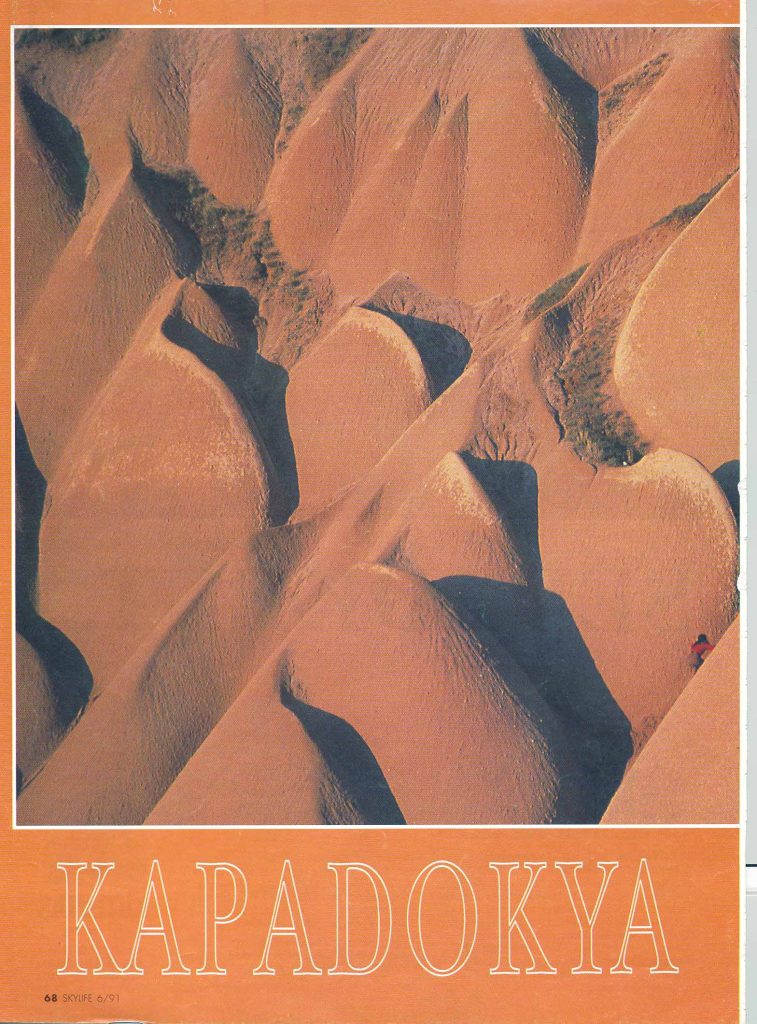
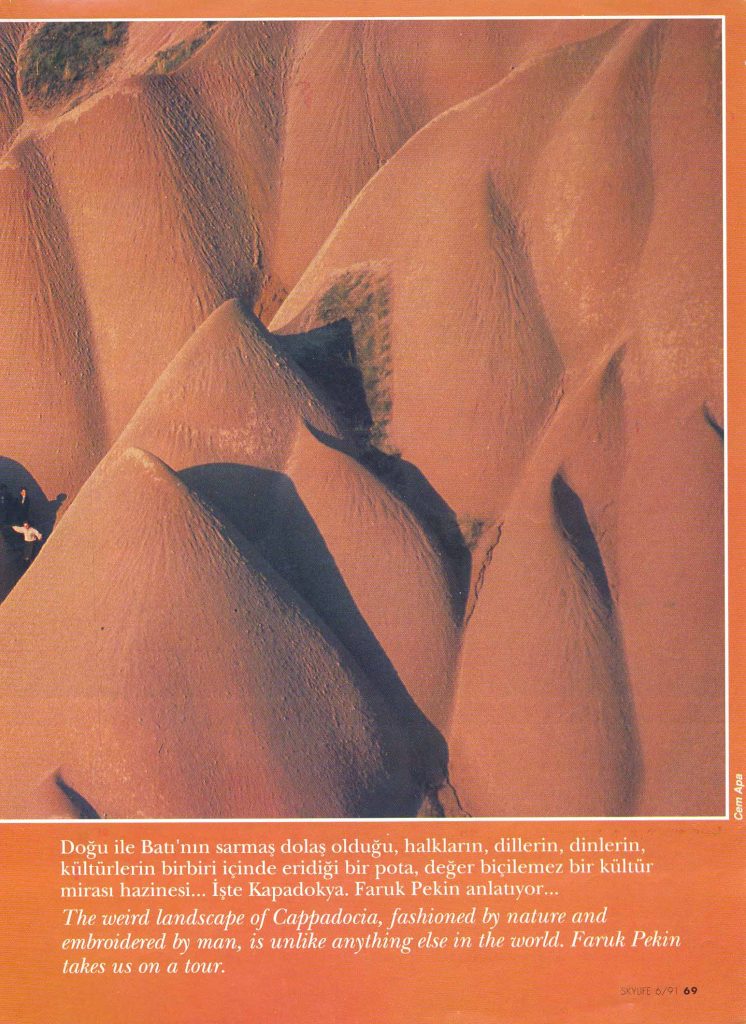
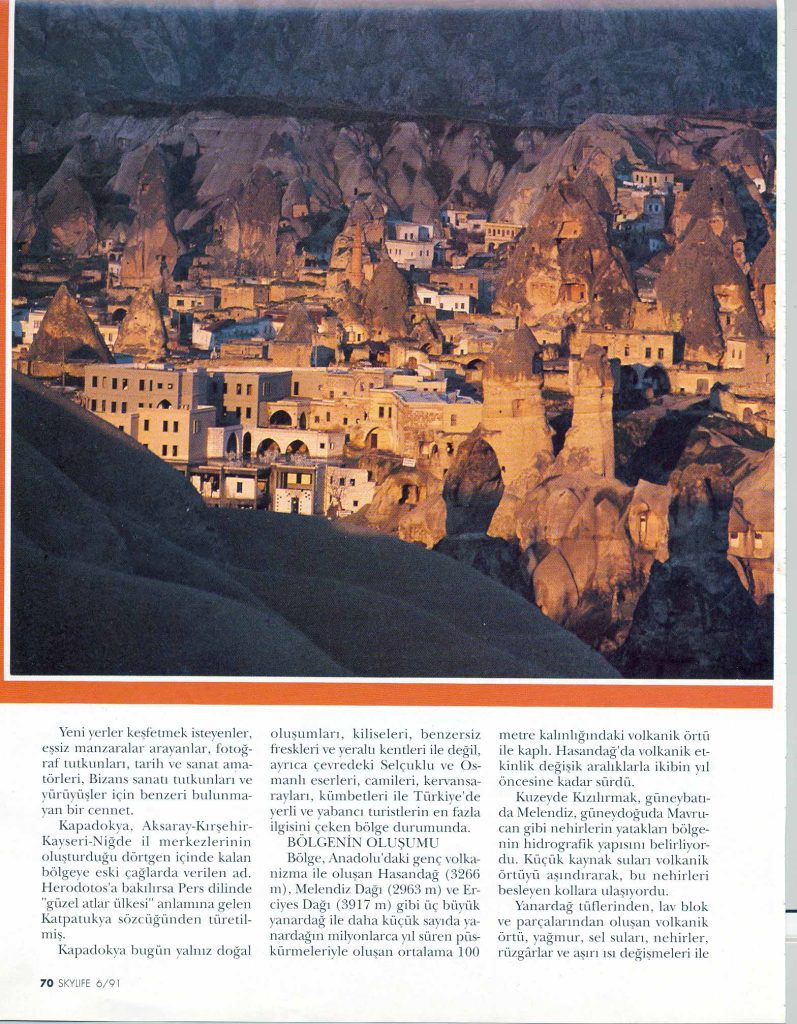
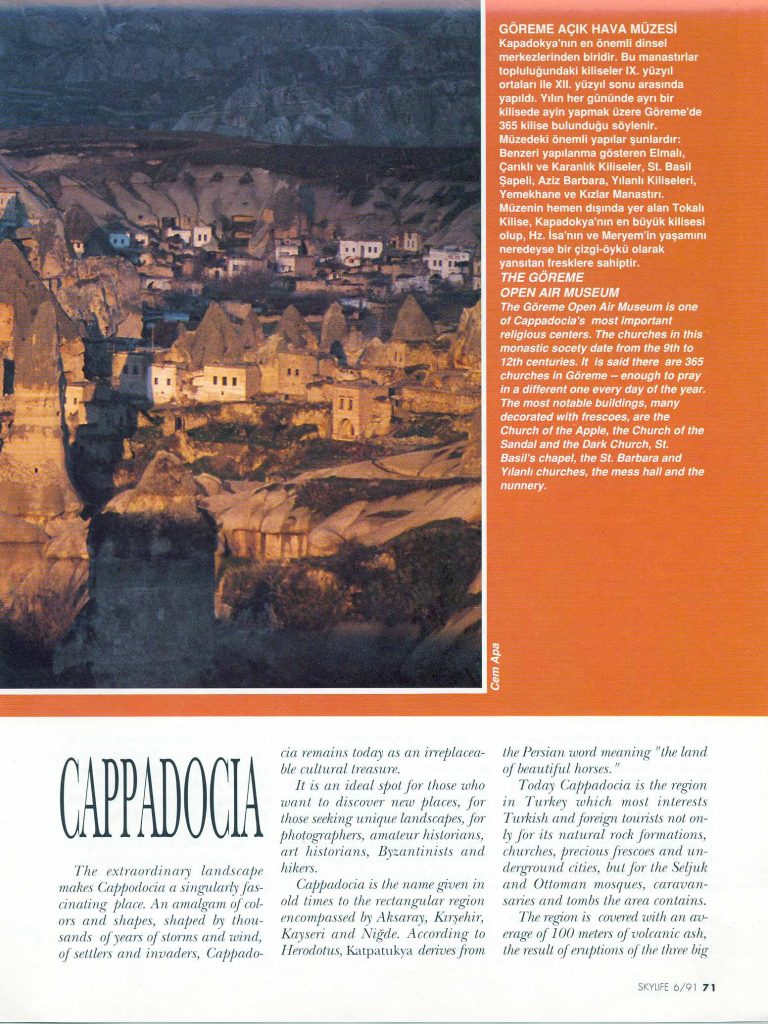

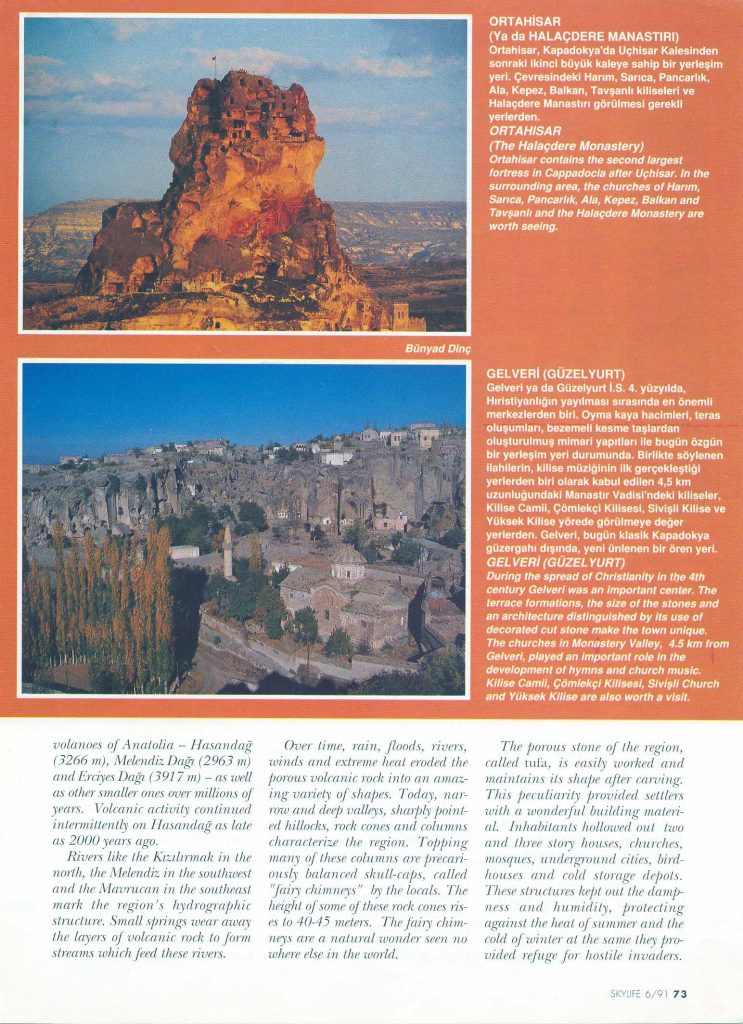
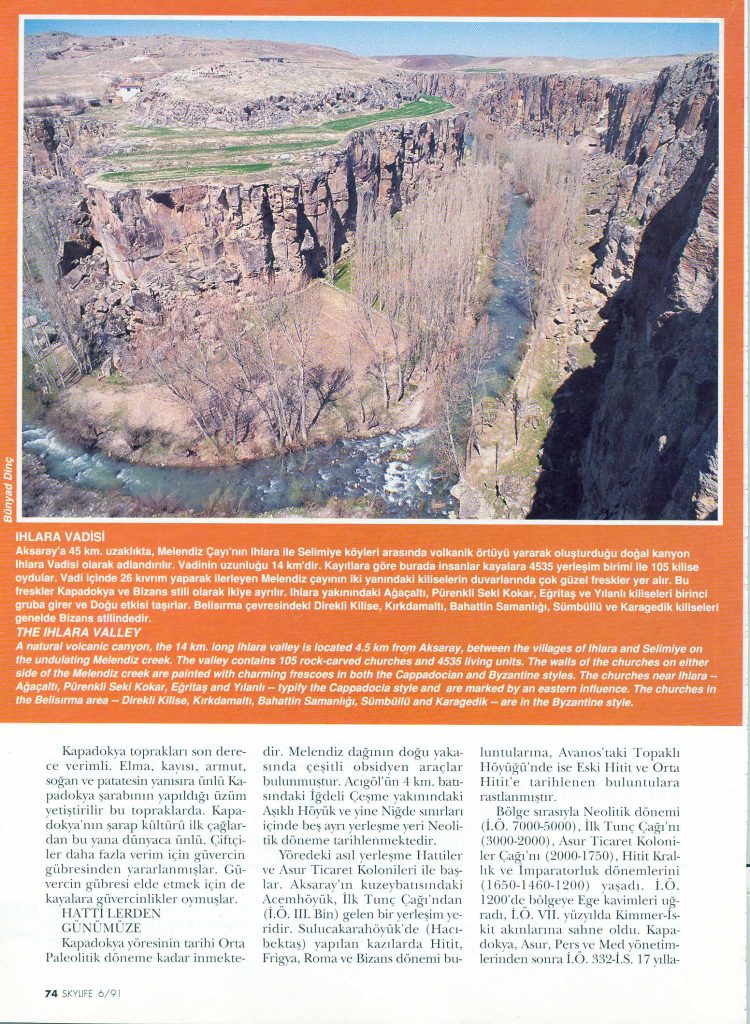
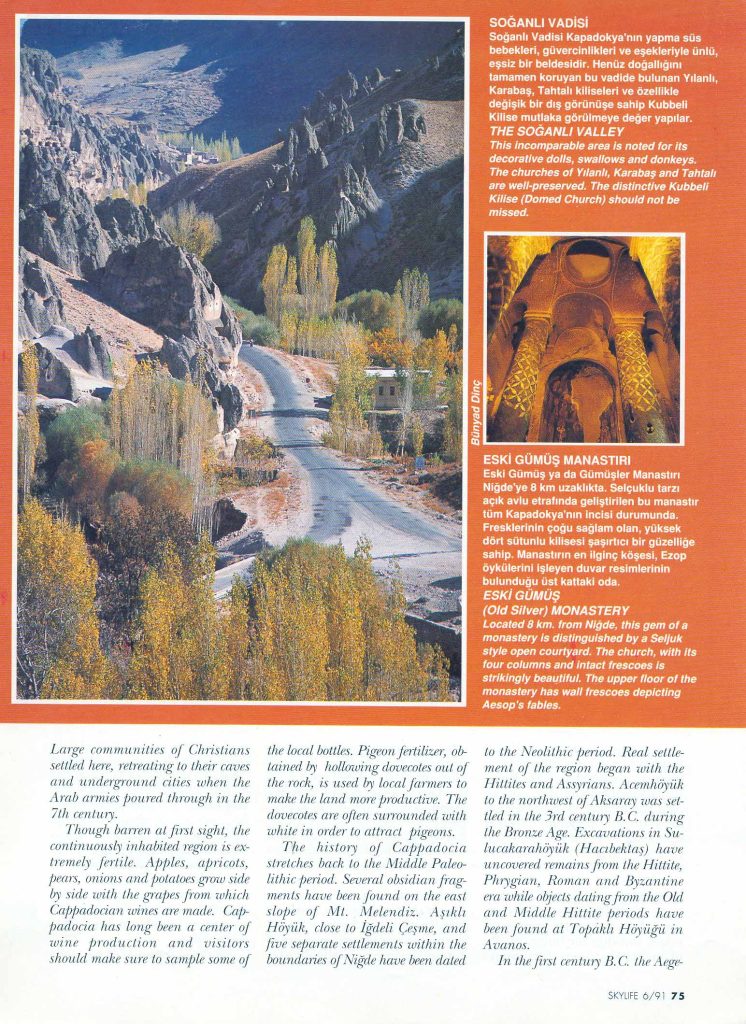
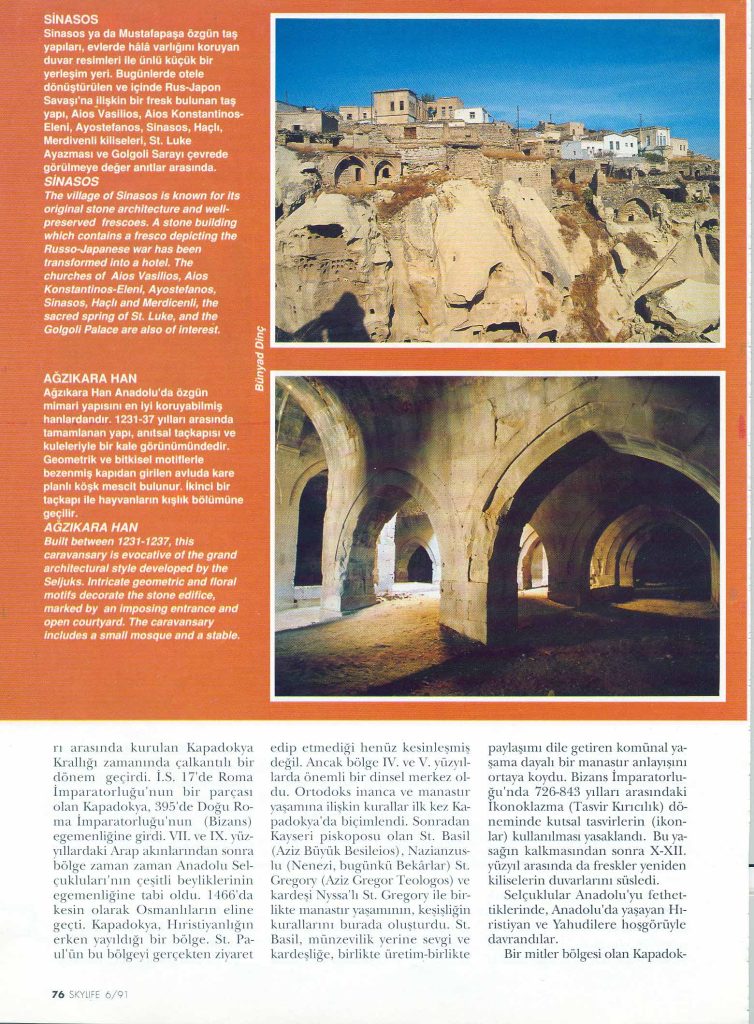
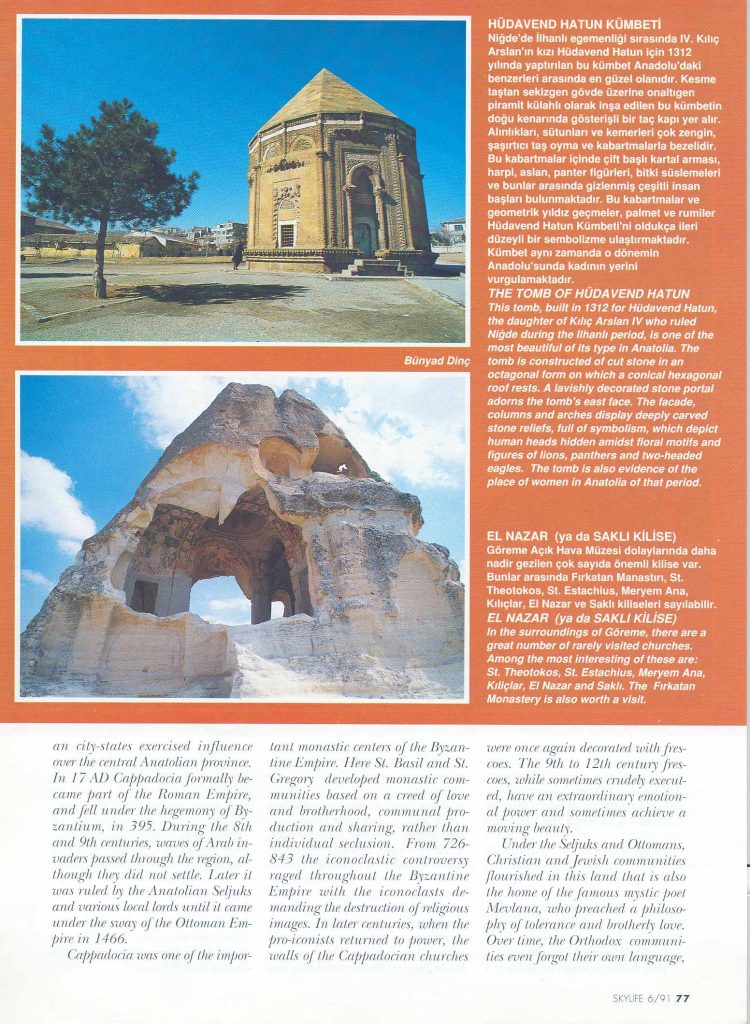
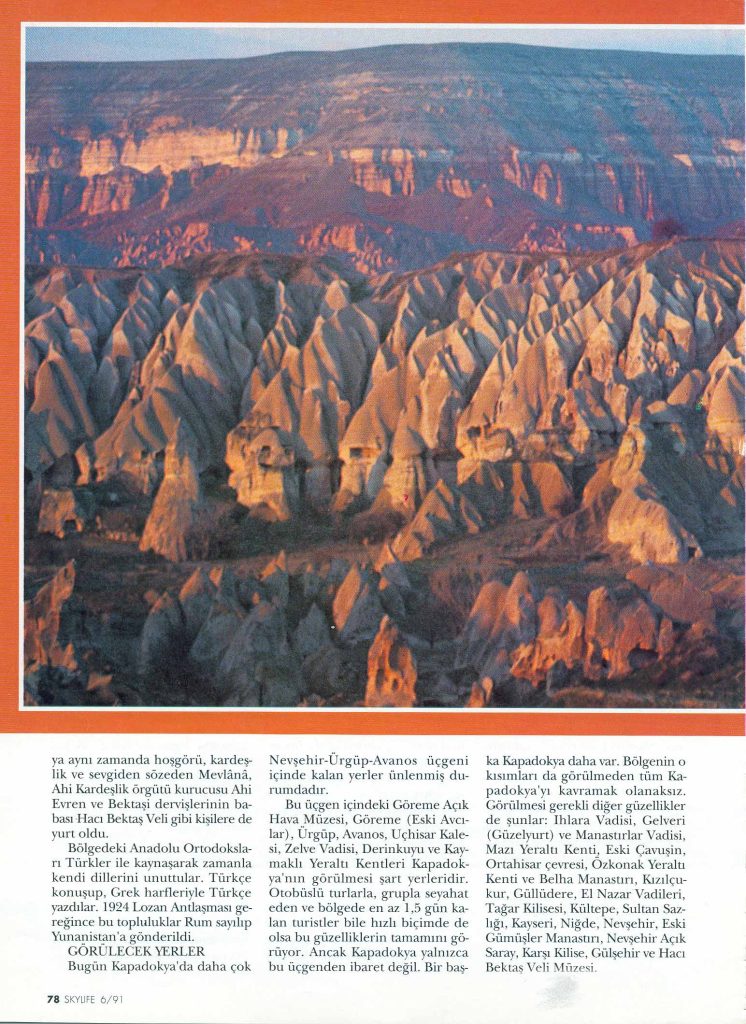

KAPADOKYA'NIN BİLİNMEYENLERİ
WOODEN MOSQUES OF THE BLACK SEA REGION
Bunları da beğenebilirsiniz

DARWIN’İN ZİHNİNİ AÇAN GALAPAGOS ADALARI
6 Temmuz 2020
Sibirya’ya Seyahat
20 Nisan 2020